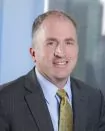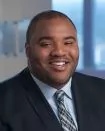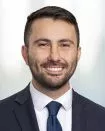Overview
On December 5, 2023, NCAA President Charlie Baker sent a letter (the "Letter") to NCAA Division I school members detailing several proposed changes to the NCAA's name, image, and likeness ("NIL") policy.1 These changes permit Division I schools to participate directly in NIL deals with their student-athletes in ways that were previously impermissible. Described as a "forward-looking framework,"2 the three main changes to existing NCAA policies outlined in the Letter are:
- Division I schools will be able to offer student-athletes "enhanced educational benefits" that the schools "deem appropriate";
- Division I schools will be able to enter into NIL licensing opportunities with their student-athletes; and
- A subdivision of Division I schools with "the highest resources to invest in their student-athletes" must do the following: (a) within the framework of Title IX, invest at least $30,000 per year into an enhanced educational trust fund for at least half of the institution's eligible student-athletes; and (b) commit to working with peer institutions within the subdivision to create rules that may differ from the rules in place for the rest of Division I schools (including in the areas of scholarship commitment, roster size, recruitment, transfers, and NIL).
The Letter outlines several benefits that the NCAA believes will result from these changes, including allowing highly resourced educational institutions an opportunity to operate within a set of rules that more accurately and equitably reflects their scale and operating model.
The NCAA has become more permissive of opportunities for student-athletes following the Supreme Court's unanimous May 2021 ruling in NCAA v. Alston,3 which held that the NCAA had violated antitrust law by limiting education-related compensation to student-athletes. The NCAA then introduced a groundbreaking interim NIL policy in July 20214 that, for the first time, allowed student-athletes to be compensated by third parties for NIL opportunities. The NCAA released additional guidance in October 2022,5 which provided more clarity6 on permissible NIL activities. Under the prior NCAA guidance, schools were restricted from taking an active role in "representing, sourcing, securing, negotiating, or proactively assisting a student-athlete's involvement with NIL entities" and "developing, creating, executing, or implementing a student-athlete's NIL activity."7 The Letter's proposed framework would now allow all Division I schools to enter into NIL opportunities directly with their student-athletes, and the tone of the proposed changes suggests any restrictions on schools' involvement with third-party NIL deals will be eliminated.
Impact on Current NIL Legislation and Litigation against the NCAA
The Letter briefly addresses the current headwinds of federal NIL legislative efforts and litigation against the NCAA. President Baker describes that "the courts and other public entities continue to debate reform measures that in many cases would seriously damage parts or all of college athletics." President Baker previously has welcomed federal legislation8 and several federal legislative bills have been presented post-Alston. On December 6, 2023, U.S. Senators Chris Murphy (D-CT), Bernie Sanders (I-VT), and Elizabeth Warren (D-MA) re-introduced a federal NIL bill that affirms college athletes are employees who are entitled to labor and collective bargaining rights, with U.S. Representative Jamaal Bowman (D-N.Y.) introducing companion legislation in the U.S. House of Representatives.9
The proposed changes in the Letter could be viewed as a risk mitigating response to ongoing litigation concerning NIL rights and the NCAA's regulation of college athletics. The NCAA has been hit with an onslaught of class action lawsuits from current and former NCAA athletes who have sought cash payments, lost earnings, and status as employees.10
As the NCAA continues to fight such litigation, the proposed changes in the Letter may be an effort to push back against some of the headwinds threatening the existence of the NCAA's amateurism model for college athletics and the benefits that the NCAA believes this model provides to many student-athletes. The focus of the Letter's proposed changes on the "highest resourced" Division I schools appears to be an acknowledgement that the college athletics experience (and associated economics) can vary greatly between those within and outside the group of wealthiest institutions.
Key Takeaways
It remains to be seen whether the NCAA will move forward with rule changes based on these proposals. However, the Letter's proposals could have a major impact in the following areas:
- Intellectual Property and Licensing Rights. Allowing schools to enter into NIL deals directly with student-athletes, combined with the ability of NCAA athletes to enter the Transfer Portal and transfer more freely, may create licensing complexity. Notably, an NIL deal with an NCAA athlete that transfers from one institution to another may create additional exposure for ambush marketing claims and require termination and exclusivity provisions more akin to professional athlete deals.
- School Compliance. The proposal briefly provides that the $30,000 per year for half of eligible student-athletes in an "enhanced educational trust fund" would be within Title IX, suggesting that male and female athletes would be compensated in equal proportion, likely based on participation. Additionally, universities would have to provide equal opportunity to NIL deals directly with their athletes. This may pose challenges to Title IX compliance to ensure that male and female athletes are receiving equal opportunities, particularly if booster collectives remain outside of the scope of the school's own NIL deals. Additionally, 31 states11 have passed NIL legislation that may impact the NIL opportunities offered among universities and within conferences.
The Letter does not address certain key issues, including employment status for student-athletes, visibility between institutions (including those within the "subdivision") through a national database of NIL deals, or how media rights and revenue would factor into the proposal, if at all. Such issues remain to be solved, and the Letter invites feedback from Division I Committee Members.
President Baker has indicated more changes are on the way as this is just a "starting point" for a more proactive approach by the NCAA.12 Schools, athletes, coaches, and brands interested in NIL deals will all surely continue to monitor the evolving NIL landscape and be watching closely to see what's ahead for the NCAA.
Footnotes
1. Letter from Charlie Baker, NCAA President, to Division I Committee Members (Dec. 5, 2023, 8:46 AM EDT); NCAA President Charlie Baker calls for new tier of Division I where schools can pay athletes, Associated Press, (Dec. 5, 2023), https://apnews.com/article/ncaa-baker-nil-c26542c528df277385fea7167026dbe6.
2. Letter from Charlie Baker, NCAA President, to Division I Committee Members (Dec. 5, 2023, 8:46 AM EDT).
3. NCAA v. Alston, 141 S. Ct. 2141 (2021).
4. NCAA NIL Interim Policy: A Win for Student-Athletes, but Challenges Remain Ahead, Ropes & Gray LLP (July 2, 2021), https://www.ropesgray.com/en/newsroom/alerts/2021/July/NCAA-NIL-Interim-Policy-A-Win-for-Student-Athletes-but-Challenges-Remain-Ahead.
5. Navigating the NCAA's New Guidance On Student-Athlete NIL Compensation, Ropes & Gray LLP (Nov. 30, 2022), https://www.ropesgray.com/en/insights/alerts/2022/11/navigating-the-ncaas-new-guidance-on-student-athlete-nil-compensation.
6. NCAA NIL Update: With a Semester of NIL Opportunities in the Books, Trends Emerge and Confusion Reigns, Ropes & Gray LLP (Mar. 1, 2022), https://www.ropesgray.com/en/newsroom/alerts/2022/march/ncaa-nil-update-with-a-semester-of-nil-opportunities-in-the-books-trends-emerge-and-confusion-reigns.
7. NCAA NIL Update: With a Semester of NIL Opportunities in the Books, Trends Emerge and Confusion Reigns, Ropes & Gray LLP (Mar. 1, 2022), https://www.ropesgray.com/en/newsroom/alerts/2022/march/ncaa-nil-update-with-a-semester-of-nil-opportunities-in-the-books-trends-emerge-and-confusion-reigns.
8. Ralph D. Russo, Charlie Baker says NCAA made a 'big mistake' by not setting up framework for NIL compensation, Boston (June 9, 2023), https://www.boston.com/sports/college-sports/2023/06/09/charlie-baker-ncaa-big-mistake-not-setting-up-framework-nil-compensation/.
9. Daniel Murphy, What to expect for NIL, Title IX with proposed NCAA rule changes, ESPN (Dec. 6, 2023), https://www.espn.com/college-sports/story/_/id/39056505/ncaa-rule-changes-nil-paying-athletes-title-ix-charlie-baker-faq/; Press Release, Chris Murphy, Senator, U.S. Senate, With Support From Major Labor Unions And Players Associations, Murphy, Sanders, Warren Reintroduce Legislation To Strengthen College Athletes' Collective Bargaining Rights (Dec. 6, 2023), https://www.murphy.senate.gov/newsroom/press-releases/with-support-from-major-labor-unions-and-players-associations-murphy-sanders-warren-reintroduce-legislation-to-strengthen-college-athletes-collective-bargaining-rights.
10. The lawsuits include the following: Ohio et al v. NCAA, no. 1:23-cv-100, (N.D.W. Va. Dec. 7, 2023); Carter et al v. NCAA et al, no. 4:23-cv-6325, (N.D. Cal. Dec. 7, 2023); Fontenot v. NCAA et al, no. 1:23-cv-03076, (D. Colo. Nov. 20, 2023); Hubbard et al v. NCAA et al, no. 4:23-cv-01593, (N.D. Cal. Apr. 4, 2023); In re College Athlete NIL Litigation, no. 4:20-cv-3919, (N.D. Cal. June 15, 2020); and Johnson v. NCAA, no. 2:19-cv-05230, (E.D. Pa. Nov. 6, 2019).
11. Tracker: Name, Image and Likeness Legislation by State, Business of College Sports, https://businessofcollegesports.com/tracker-name-image-and-likeness-legislation-by-state/ (last updated July 28, 2023).
12. Ralph D. Russo, Proposal to create new tier for big-money college sports is just a start, NCAA president says, Wash. Post (Dec. 6, 2023), https://www.washingtonpost.com/sports/2023/12/06/ncaa-college-sports-new-tier/3cef40fc-9476-11ee-9d5c-d462c9032daa_story.html.
The content of this article is intended to provide a general guide to the subject matter. Specialist advice should be sought about your specific circumstances.







